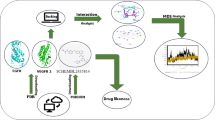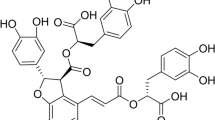Abstract
Purpose
Cancer chemotherapies have improved the prognosis of cancer patients in recent years; however, their side effects on the cardiovascular systems have emerged as a major concern in the field of both cardiology and oncology. In particular, multi-targeted tyrosine kinase inhibitors are known to induce various types of cardiovascular adverse events including hypertension, QT-interval prolongation and heart failure, but their underlying mechanisms remain elusive. To explore how to better predict such drug-induced cardiovascular adverse events, we assessed the electropharmacological effects of sunitinib using the halothane-anesthetized dogs (n = 5), while plasma concentrations of cardiac enzymes including aspartate aminotransferase, lactate dehydrogenase, creatinine kinase and cardiac troponin I were measured.
Methods
Sunitinib was intravenously administered at 0.01 and 0.1 mg/kg for 10 min with 20 min interval.
Results
Sunitinib decreased the amplitude of maximum downstroke velocity of the left ventricular pressure, prolonged the isovolumic relaxation time and increased the left ventricular end-diastolic pressure in a dose-related manner without affecting the other cardiohemodynamic and electrophysiological variables. More importantly, sunitinib significantly elevated cardiac troponin I level for 30–60 min after the high dose without altering the other biomarkers.
Conclusions
Monitoring of the cardiac diastolic function together with cardiac troponin I after the start of sunitinib administration may become a reliable measure to predict the onset of sunitinib-induced cardiovascular adverse events.




Similar content being viewed by others
References
Zamorano JL, Lancellotti P, Rodriguez Muñoz D, Aboyans V, Asteggiano R, Galderisi M, Habib G, Lenihan DJ, Lip GY, Lyon AR, Lopez Fernandez T, Mohty D, Piepoli MF, Tamargo J, Torbicki A, Suter TM (2016) ESC position paper on cancer treatments and cardiovascular toxicity developed under the auspices of the ESC committee for practice guidelines: the task force for cancer treatments and cardiovascular toxicity of the European Society of Cardiology (ESC). Eur Heart J 37:2768–2801
Cautela J, Lalevée N, Ammar C, Ederhy S, Peyrol M, Debourdeau P, Serin D, Le Dolley Y, Michel N, Orabona M, Barraud J, Laine M, Bonello L, Paganelli F, Barlési F, Thuny F (2016) Management and research in cancer treatment-related cardiovascular toxicity: challenges and perspectives. Int J Cardiol 224:366–375
Henson KE, Reulen RC, Winter DL, Bright CJ, Fidler MM, Frobisher C, Guha J, Wong KF, Kelly J, Edgar AB, McCabe MG, Whelan J, Cutter DJ, Darby SC, Hawkins MM (2016) Cardiac mortality among 200 000 five-year survivors of cancer diagnosed at 15 to 39 years of age: the teenage and young adult cancer survivor study. Circulation 134:1519–1531
Albini A, Pennesi G, Donatelli F, Cammarota R, De Flora S, Noonan DM (2010) Cardiotoxicity of anticancer drugs: the need for cardio-oncology and cardio-oncological prevention. J Natl Cancer Inst 102:14–25
Krause DS, Van Etten RA (2005) Tyrosine kinases as targets for cancer therapy. N Engl J Med 353:172–187
Blumenthal GM, Cortazar P, Zhang JJ, Tang S, Sridhara R, Murgo A, Justice R, Pazdur R (2012) FDA approval summary: sunitinib for the treatment of progressive well-differentiated locally advanced or metastatic pancreatic neuroendocrine tumors. Oncologist 17:1108–1113
Mendel DB, Laird AD, Xin X, Louie SG, Christensen JG, Li G, Schreck RE, Abrams TJ, Ngai TJ, Lee LB, Murray LJ, Carver J, Chan E, Moss KG, Haznedar JO, Sukbuntherng J, Blake RA, Sun L, Tang C, Miller T, Shirazian S, McMahon G, Cherrington JM (2003) In vivo antitumor activity of SU11248, a novel tyrosine kinase inhibitor targeting vascular endothelial growth factor and platelet-derived growth factor receptors: determination of a pharmacokinetic/pharmacodynamic relationship. Clin Cancer Res 9:327–337
Chu TF, Rupnick MA, Kerkela R, Dallabrida SM, Zurakowski D, Nguyen L, Woulfe K, Pravda E, Cassiola F, Desai J, George S, Morgan JA, Harris DM, Ismail NS, Chen JH, Schoen FJ, Van den Abbeele AD, Demetri GD, Force T, Chen MH (2007) Cardiotoxicity associated with tyrosine kinase inhibitor sunitinib. Lancet 370:2011–2019
Force T, Krause DS, Van Etten RA (2007) Molecular mechanisms of cardiotoxicity of tyrosine kinase inhibition. Nat Rev Cancer 7:332–344
Hasinoff BB, Patel D, O’Hara KA (2008) Mechanisms of myocyte cytotoxicity induced by the multiple receptor tyrosine kinase inhibitor sunitinib. Mol Pharmacol 74:1722–1728
Motzer RJ, Hutson TE, Tomczak P, Michaelson MD, Bukowski RM, Oudard S, Negrier S, Szczylik C, Pili R, Bjarnason GA, Garcia-del-Muro X, Sosman JA, Solska E, Wilding G, Thompson JA, Kim ST, Chen I, Huang X, Figlin RA (2009) Overall survival and updated results for sunitinib compared with interferon alfa in patients with metastatic renal cell carcinoma. J Clin Oncol 27:3584–3590
Akaza H, Naito S, Ueno N, Aoki K, Houzawa H, Pitman Lowenthal S, Lee SY (2015) Real-world use of sunitinib in Japanese patients with advanced renal cell carcinoma: efficacy, safety and biomarker analyses in 1689 consecutive patients. Jpn J Clin Oncol 45:576–583
Vrdoljak E, Géczi L, Mardiak J, Ciuleanu TE, Leyman S, Zhang K, Sajben P, Torday L (2015) Central and eastern european experience with sunitinib in metastatic renal cell carcinoma: a sub-analysis of the global expanded-access trial. Pathol Oncol Res 21:775–782
Sugiyama A (2008) Sensitive and reliable proarrhythmia in vivo animal models for predicting drug-induced torsade de pointes in patients with remodelled hearts. Br J Pharmacol 154:1528–1537
Sugiyama A, Hashimoto K (1998) Effects of gastrointestinal prokinetic agents, TKS159 and cisapride, on the in situ canine heart assessed by cardiohemodynamic and electrophysiological monitoring. Toxicol Appl Pharmacol 152:261–269
Qi WX, Shen Z, Tang LN, Yao Y (2014) Congestive heart failure risk in cancer patients treated with vascular endothelial growth factor tyrosine kinase inhibitors: a systematic review and meta-analysis of 36 clinical trials. Br J Clin Pharmacol 78:748–762
Bordun KA, Premecz S, daSilva M, Mandal S, Goyal V, Glavinovic T, Cheung M, Cheung D, White CW, Chaudhary R, Freed DH, Villarraga HR, Herrmann J, Kohli M, Ravandi A, Thliveris J, Pitz M, Singal PK, Mulvagh S, Jassal DS (2015) The utility of cardiac biomarkers and echocardiography for the early detection of bevacizumab- and sunitinib-mediated cardiotoxicity. Am J Physiol Heart Circ Physiol 309:H692-701
Nikolić S, Yellin EL, Tamura K, Vetter H, Tamura T, Meisner JS, Frater RW (1988) Passive properties of canine left ventricle: diastolic stiffness and restoring forces. Circ Res 62:1210–1222
Van de Water A, Verheyen J, Xhonneux R, Reneman RS (1989) An improved method to correct the QT interval of the electrocardiogram for changes in heart rate. J Pharmacol Methods 22:207–217
Teichholz LE, Kreulen T, Herman MV, Gorlin R (1976) Problems in echocardiographic volume determinations: echocardiographic-angiographic correlations in the presence of absence of asynergy. Am J Cardiol 37:7–11
Otto CM (2004) Left and right ventricular systolic function. In: Otto CM (ed) Textbook of clinical echocardiography, 3rd edn. Elsevier Saunders, Philadelphia, pp 131–165
Pai RG, Gill KS (1998) Amplitudes, durations, and timings of apically directed left ventricular myocardial velocities: II. Systolic and diastolic asynchrony in patients with left ventricular hypertrophy. J Am Soc Echocardiogr 11:112–118
Blanchet B, Saboureau C, Benichou AS, Billemont B, Taieb F, Ropert S, Dauphin A, Goldwasser F, Tod M (2009) Development and validation of an HPLC-UV-visible method for sunitinib quantification in human plasma. Clin Chim Acta 404:134–139
Yang Y, Bu P (2016) Progress on the cardiotoxicity of sunitinib: Prognostic significance, mechanism and protective therapies. Chem Biol Interact 257:125–131
León-Mateos L, Mosquera J, Antón Aparicio L (2015) Treatment of sunitinib-induced hypertension in solid tumor by nitric oxide donors. Redox Biol 6:421–425
Azizi M, Chedid A, Oudard S (2008) Home blood-pressure monitoring in patients receiving sunitinib. N Engl J Med 358:95–97
Khakoo AY, Kassiotis CM, Tannir N, Plana JC, Halushka M, Bickford C, Trent J II, Champion JC, Durand JB, Lenihan DJ (2008) Heart failure associated with sunitinib malate: a multitargeted receptor tyrosine kinase inhibitor. Cancer 112:2500–2508
Deeks ED, Keating GM (2006) Sunitinib. Drugs 66:2255–2266
Kerkela R, Woulfe KC, Durand JB, Vagnozzi R, Kramer D, Chu TF, Beahm C, Chen MH, Force T (2009) Sunitinib-induced cardiotoxicity is mediated by off-target inhibition of AMP-activated protein kinase. Clin Transl Sci 2:15–25
Doherty KR, Wappel RL, Talbert DR, Trusk PB, Moran DM, Kramer JW, Brown AM, Shell SA, Bacus S (2013) Multi-parameter in vitro toxicity testing of crizotinib, sunitinib, erlotinib, and nilotinib in human cardiomyocytes. Toxicol Appl Pharmacol 272:245–255
Thijs AM, El Messaoudi S, Vos JC, Wouterse AC, Verweij V, van Swieten H, van Herpen CM, van der Graaf WT, Noyez L, Rongen GA (2015) Sunitinib does not attenuate contractile force following a period of ischemia in isolated human cardiac muscle. Target Oncol 10:439–443
Oyama MA, Sisson DD (2004) Cardiac troponin-I concentration in dogs with cardiac disease. J Vet Intern Med 18:831–839
Katz AM (1988) Cellular mechanisms in congestive heart failure. Am J Cardiol 62:3A-8A
Mooney L, Skinner M, Coker SJ, Currie S (2015) Effects of acute and chronic sunitinib treatment on cardiac function and calcium/calmodulin-dependent protein kinase II. Br J Pharmacol 172:4342–4354
Ghatalia P, Je Y, Kaymakcalan MD, Sonpavde G, Choueiri TK (2015) QTc interval prolongation with vascular endothelial growth factor receptor tyrosine kinase inhibitors. Br J Cancer 112:296–305
Bello CL, Mulay M, Huang X, Patyna S, Dinolfo M, Levine S, Van Vugt A, Toh M, Baum C, Rosen L (2009) Electrocardiographic characterization of the QTc interval in patients with advanced solid tumors: pharmacokinetic–pharmacodynamic evaluation of sunitinib. Clin Cancer Res 15:7045–7052
Näbauer M, Kääb S (1998) Potassium channel down-regulation in heart failure. Cardiovasc Res 37:324–334
Strevel EL, Ing DJ, Siu LL (2007) Molecularly targeted oncology therapeutics and prolongation of the QT interval. J Clin Oncol 25:3362–3371
Bowlin SJ, Xia F, Wang W, Robinson KD, Stanek EJ (2013) Twelve-month frequency of drug-metabolizing enzyme and transporter-based drug–drug interaction potential in patients receiving oral enzyme-targeted kinase inhibitor antineoplastic agents. Mayo Clin Proc 88:139–148
Acknowledgements
This study was supported in part by the Fund for the Advancement of Science in commemoration of Toho University’s 60th anniversary and JSPS KAKENHI (#JP15K08246, #JP16K08559, #JP17K17068). The authors thank Ms. Misako Nakatani and Mrs. Yuri Ichikawa for their technical assistance.
Funding
This study was funded in part by the Fund for the Advancement of Science in commemoration of Toho University’s 60th anniversary and JSPS KAKENHI (#JP15K08246, #JP16K08559, #JP17K17068).
Author information
Authors and Affiliations
Corresponding author
Ethics declarations
Conflict of interest
The authors declare that there are no conflicts of interest.
Ethical approval
All experiments were approved by Toho University Animal Care and User Committee (nos. 15-55-151, 15-52-272, 16-51-324, 16-53-272) and performed in accordance with the Guidelines for the Care and Use of Laboratory Animals of Toho University.
Rights and permissions
About this article
Cite this article
Wada, T., Ando, K., Naito, A.T. et al. Sunitinib does not acutely alter left ventricular systolic function, but induces diastolic dysfunction. Cancer Chemother Pharmacol 82, 65–75 (2018). https://doi.org/10.1007/s00280-018-3593-9
Received:
Accepted:
Published:
Issue Date:
DOI: https://doi.org/10.1007/s00280-018-3593-9




